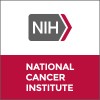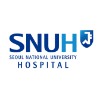
A Combined Study in Pediatric Cancer Patients for Dose Ranging and Efficacy/Safety of Plerixafor...
Ewing's Sarcoma/Soft Tissue SarcomaNeuroblastoma1 moreThis is a multi-site study with plerixafor in pediatric cancer patients. The study will be conducted in 2 stages: Stage 1 is a dose-escalation study. Stage 2 is an open-label, randomized, comparative study using the appropriate dosing regimen identified in the Stage 1 dose-escalation study. All participating patients will receive a standard mobilization regimen as per study site practice guidelines (either chemotherapy plus once daily granulocyte-colony stimulating factor (G-CSF) or once daily G-CSF alone). The only change to the standard mobilization regimen is the addition of plerixafor treatment prior to apheresis for all patients in Stage 1 (dose escalation), and for those patients randomized to the plerixafor plus standard mobilization treatment arm in Stage 2 (randomized, comparative). Stage 1 will enroll at least 27 patients. Stage 2 will enroll at least 40 patients.

Use of Racotumomab in Patients With Pediatric Tumors Expressing N-glycolylated Gangliosides
NeuroblastomaEwing's Sarcoma3 moreThis study will be carried out in children with diagnosis of cancer with tumors known to express N-glycolylated gangliosides. The disease must be resistant to conventional therapy. The acute toxicity and immune response will be evaluated. The expression of N-glycolylated gangliosides in tumors has previously been investigated in the tumor sample bank at this Hospital. The expression of N-glycolyl GM3 was shown in neuroblastoma, Ewing's sarcoma, Wilm's tumor and retinoblastoma. Gliomas and the aforementioned tumor types have a very bad prognosis when conventional treatment is ineffective. New therapeutic strategies have thus been examined, and several immunotherapeutic approaches, including dendritic cell vaccines, peptide vaccines and anti-idiotype vaccines are currently being assessed. Racotumomab is an anti-idiotype antibody capable of inducing anti-N-glycolyl GM3 antibodies in patients with melanoma, breast cancer and lung cancer. Dose escalation studies have shown the safety of racotumomab in the 0.5 to 2 mg dose range. The 1 mg dose level was selected for the ensuing clinical studies. This clinical trial in children involves three dose levels: 0.15 mg, 0.25 mg and 0.4 mg, owing to the difference in body surface between an adult (1.73 sq. m in average) and the candidate population for this study (0.55 to 0.7 sq. m).

Irinotecan Hydrochloride and Temozolomide With Temsirolimus or Dinutuximab in Treating Younger Patients...
GanglioneuroblastomaRecurrent NeuroblastomaThis randomized phase II trial studies how well irinotecan hydrochloride and temozolomide with temsirolimus or dinutuximab work in treating younger patients with neuroblastoma that has returned or does not respond to treatment. Drugs used in chemotherapy, such as irinotecan hydrochloride and temozolomide, work in different ways to stop the growth of tumor cells, either by killing the cells, by stopping them from dividing, or by stopping them from spreading. Temsirolimus may stop the growth of tumor cells by blocking some of the enzymes needed for cell growth. Monoclonal antibodies, such as dinutuximab, may find tumor cells and help kill them or carry tumor-killing substances to them. It is not yet known whether giving irinotecan hydrochloride and temozolomide together with temsirolimus or dinutuximab is more effective in treating neuroblastoma.

Alisertib in Treating Young Patients With Recurrent or Refractory Solid Tumors or Leukemia
HepatoblastomaPreviously Treated Childhood Rhabdomyosarcoma9 moreThis phase II trial is studying the side effects of and how well alisertib works in treating young patients with relapsed or refractory solid tumors or leukemia. Alisertib may stop the growth of cancer cells by blocking some of the enzymes needed for cell growth.

Vorinostat and Isotretinoin in Treating Patients With High-Risk Refractory or Recurrent Neuroblastoma...
Localized Unresectable NeuroblastomaRecurrent Neuroblastoma3 moreThis phase I trial is studying the side effects and the best dose of vorinostat when given together with isotretinoin to see how well it works in treating patients with high-risk refractory or recurrent neuroblastoma. Vorinostat may stop the growth of tumor cells by blocking some of the enzymes needed for cell growth. Isotretinoin may help vorinostat work better by making tumor cells more sensitive to the drug. Giving vorinostat together with isotretinoin may be an effective treatment for neuroblastoma.

A Pilot Study of Activated T Cell Therapy for Refractory/Relapsed Neuroblastoma
NeuroblastomaActivated T cell were manufactured through in vitro T cell expansion of autologous T cell. We designed this study to determine the feasibility and safety of Activated T-lymphocyte cell therapy for refractory/relapsed neuroblastoma patients.

A Phase I Study of Vorinostat and Bortezomib in Children With Refractory of Recurrent Solid Tumors,...
LymphomaSarcoma2 moreBackground: - Vorinostat and bortezomib are anti-tumor drugs that have been approved by the Food and Drug Administration to treat different kinds of myeloma and lymphoma in adults. The combination of these two drugs has been tried in a small number of adults, but it has not been formally approved and is experimental, particularly in children. Researchers are interested in determining safe and effective treatment doses of vorinostat and bortezomib in children, and learning more about how these drugs affect tumor growth and human development. Objectives: To determine safe and effective doses of vorinostat and bortezomib to treat solid tumors in children. To study the effects of vorinostat and bortezomib on blood cells, blood flow, and human development. Eligibility: - Children, adolescents, and young adults between 1 and 21 years of age who have been diagnosed with solid tumors that have not responded to treatment. Design: Eligible participants will be screened with a physical examination, blood and tumor samples, and imaging studies. Participants will have 21-day treatment cycles of vorinostat and bortezomib. Vorinostat will be given as either tablets or liquid doses on days 1 through 5 and 8 through 12 of each cycle. Bortezomib will be given as an intravenous injection on days 1, 4, 8, and 11 of each cycle. Participants will keep a drug administration diary to record information about side effects or other problems with the treatment. Participants may continue to receive vorinostat and bortezomib for up to 2 years unless serious side effects develop or the tumor does not respond to treatment. Additional blood samples will be taken at regular intervals for the first 3 days after the first bortezomib dose and for the first 2 days after the first vorinostat dose of the first treatment cycle.

Anti-GD2 3F8 Antibody and Allogeneic Natural Killer Cells for High-Risk Neuroblastoma
NeuroblastomaBone Marrow1 moreFunding Source - FDA OOPD FDR004128 The goal of this study is to see if it is safe and feasible to give chemotherapy, natural killer (NK) cells, and an antibody called 3F8. The NK cells must come from a family member who shares half of the HLA proteins which are immune proteins important in transplant. NK cells are a type of white blood cell. They can recognize and kill abnormal cells in the body and can work together with antibodies to kill target cells. The antibody 3F8 specifically recognizes a protein present on the target cancer cell.

Therapy to Treat Ewing's Sarcoma, Rhabdomyosarcoma or Neuroblastoma
NeuroblastomaSarcoma5 moreBackground: Pediatric solid tumors (Ewing's sarcoma, rhabdomyosarcoma, and neuroblastoma) are often difficult to cure with standard treatment. Immune therapy using an experimental vaccine made from proteins from the patient's tumor cells may boost the body's immune response against the tumor. The effects of chemotherapy on the immune system can potentially make immunotherapy more effective if administered soon after completion of chemotherapy. The addition of recombinant human IL-7 (interleukin 7) (rhIL-7 (recombinant human interleukin 7)) may make the immunotherapy more effective. Objectives: -To determine whether immune therapy given after immune suppression can help the body fight the tumor and to determine the safety of the treatment. Eligibility: -Patients with solid tumors, i.e., Ewing's sarcoma, rhabdomyosarcoma or neuroblastoma whose disease has recurred after treatment or spread beyond the original site Design: Patients undergo tumor biopsy (removal of a piece of tumor tissue) to collect tumor cells for making a vaccine from proteins in the patient's tumor and apheresis (removal of a quantity of white blood cells) to collect white cells for re-building the immune system after immune therapy. Apheresis is repeated three times during immunotherapy (weeks 8, 14 and 20). After receiving standard chemotherapy for their tumor (and an additional course of fludarabine and cyclophosphamide to further suppress immunity if needed) patients receive immune therapy in Cohorts A and B. rhIL-7 is given 48 hours before the vaccine, as an injection under the skin in an extremity that will not be used for the vaccine in patients in Cohort B only. You will be watched closely for 6 hours after the rhIL-7 for any signs of reaction. rhIL-7 will be given before vaccine doses #1, #2, #3, and #4. The vaccine is given at study weeks 2, 4, 6, 8, 10 and 12. Each vaccine is given as a total of six separate rhIL-7 followed by injections: three intradermal (like a (tuberculosis) TB test) on one arm or leg and three subcutaneous (like those for insulin injections for diabetes). on the other arm or leg. An anesthetic cream may be used to minimize the discomfort of injections. Patients' white cells are returned to them by infusion through a vein on the first day of immune therapy. Imaging studies and immune studies are done at weeks 1, 8 and 20 to determine the response to treatment on the tumor and on the immune system.

Recombinant Human Thrombopoietin in Children Receiving Ifosfamide, Carboplatin, and Etoposide Chemotherapy...
Germ Cell TumorsHepatic Cancer3 moreLife-threatening thrombocytopenia (low platelet count) and neutropenia (low white blood count) remain the major dose-limiting toxicities following chemotherapy treatment for cancer. The only remedy for thrombocytopenia at present is platelet transfusion, which is effective in preventing life-threatening hemorrhage, but may lead to other complications. Preclinical studies and studies in adults have shown recombinant human thrombopoietin (rhTPO) to be effective in stimulating platelet production. The initial phase of this trial will evaluate the safety of rhTPO use immediately after chemotherapy with ifosfamide, carboplatin, and etoposide in children with solid tumors and lymphomas. The second phase of the study will evaluate the effectiveness of rhTPO in decreasing the duration of low platelet count after chemotherapy.
